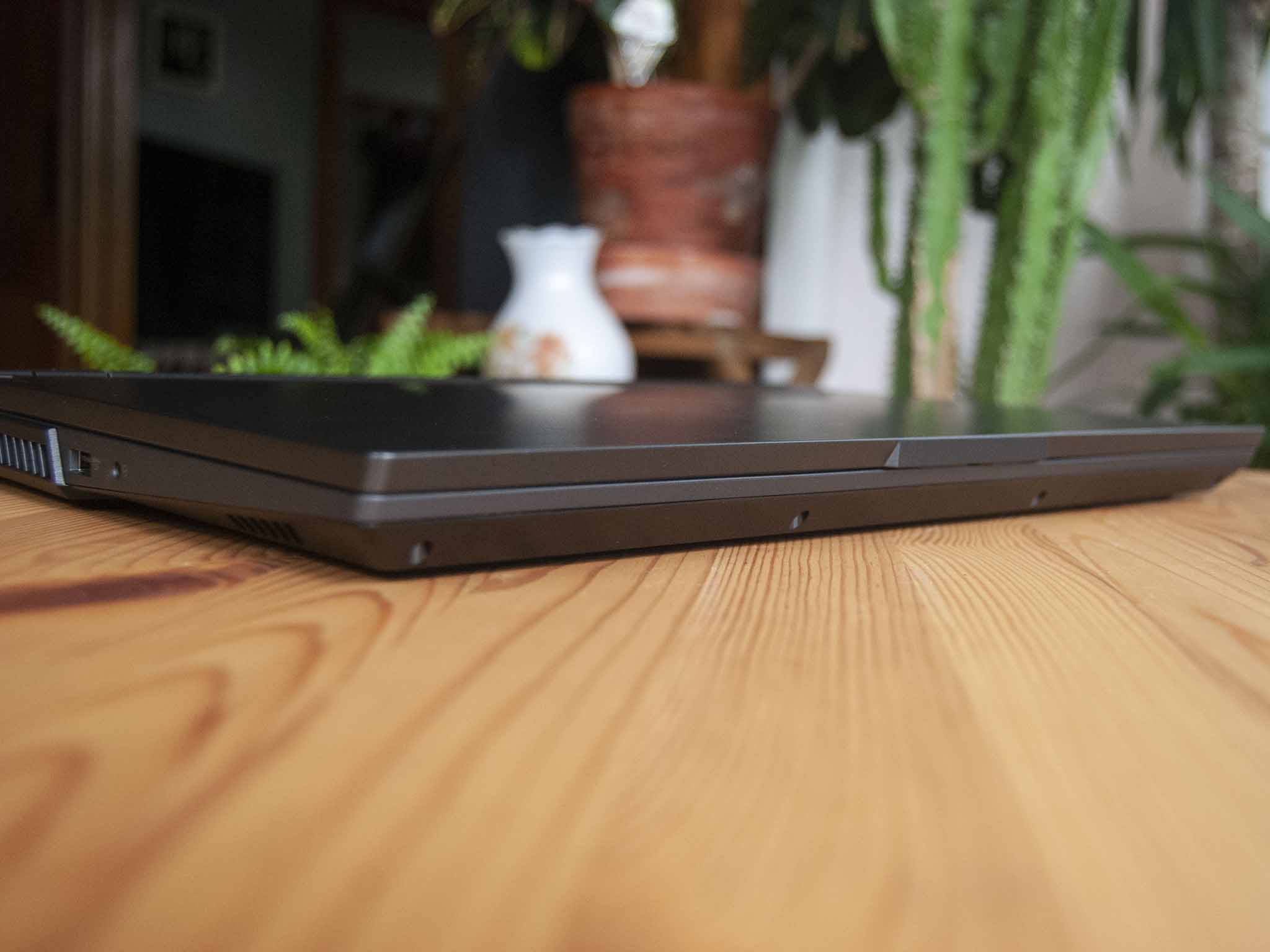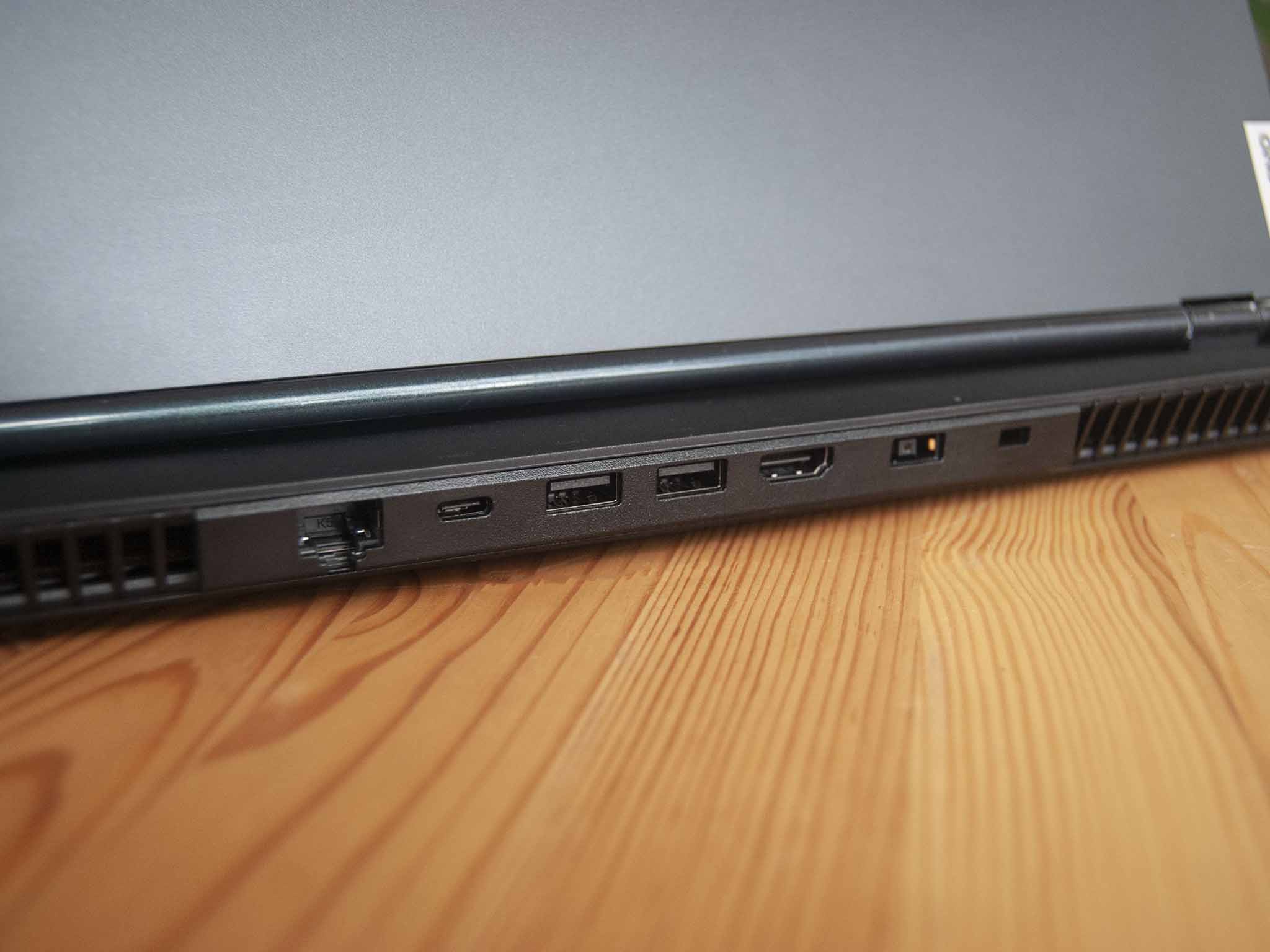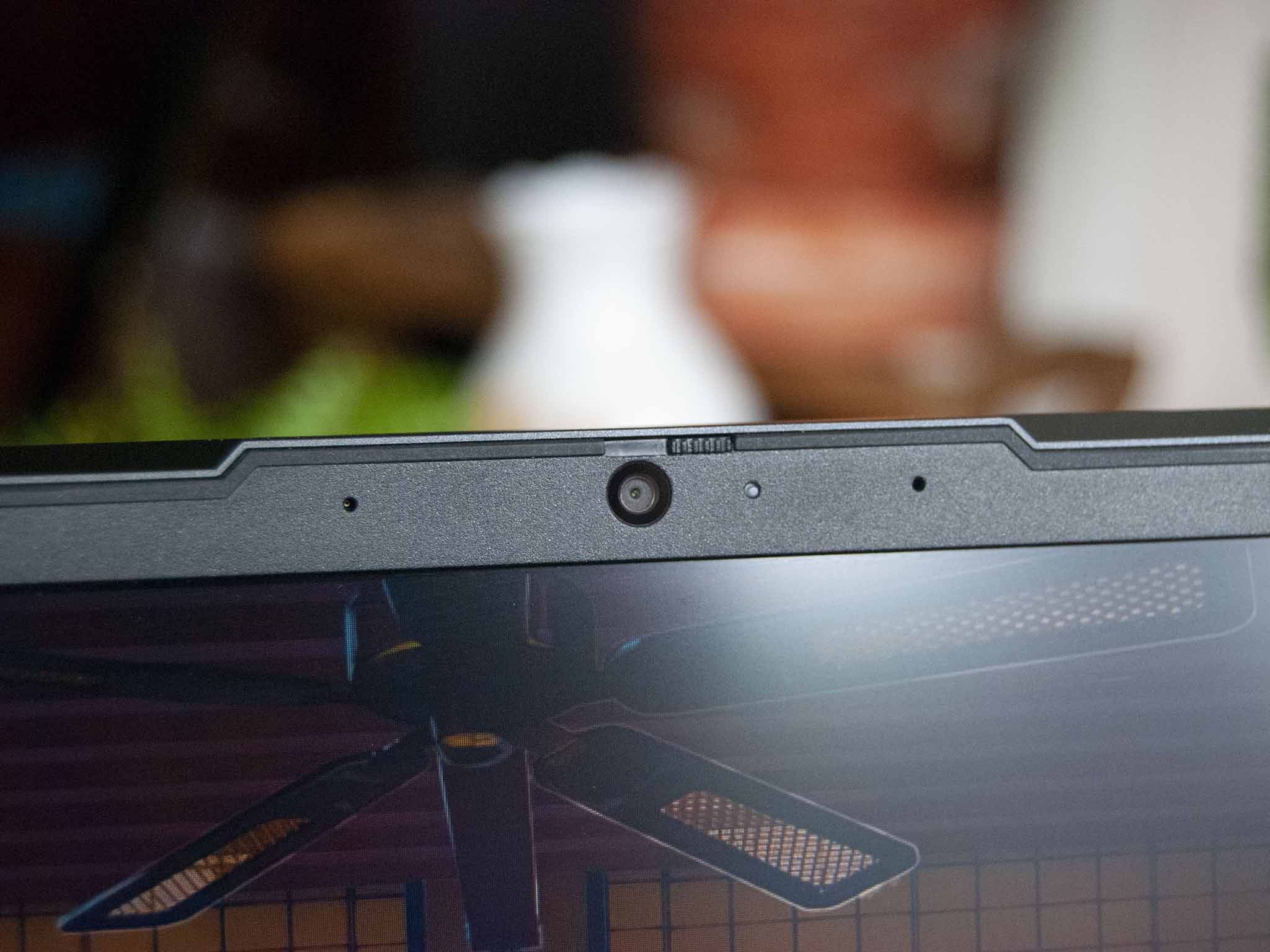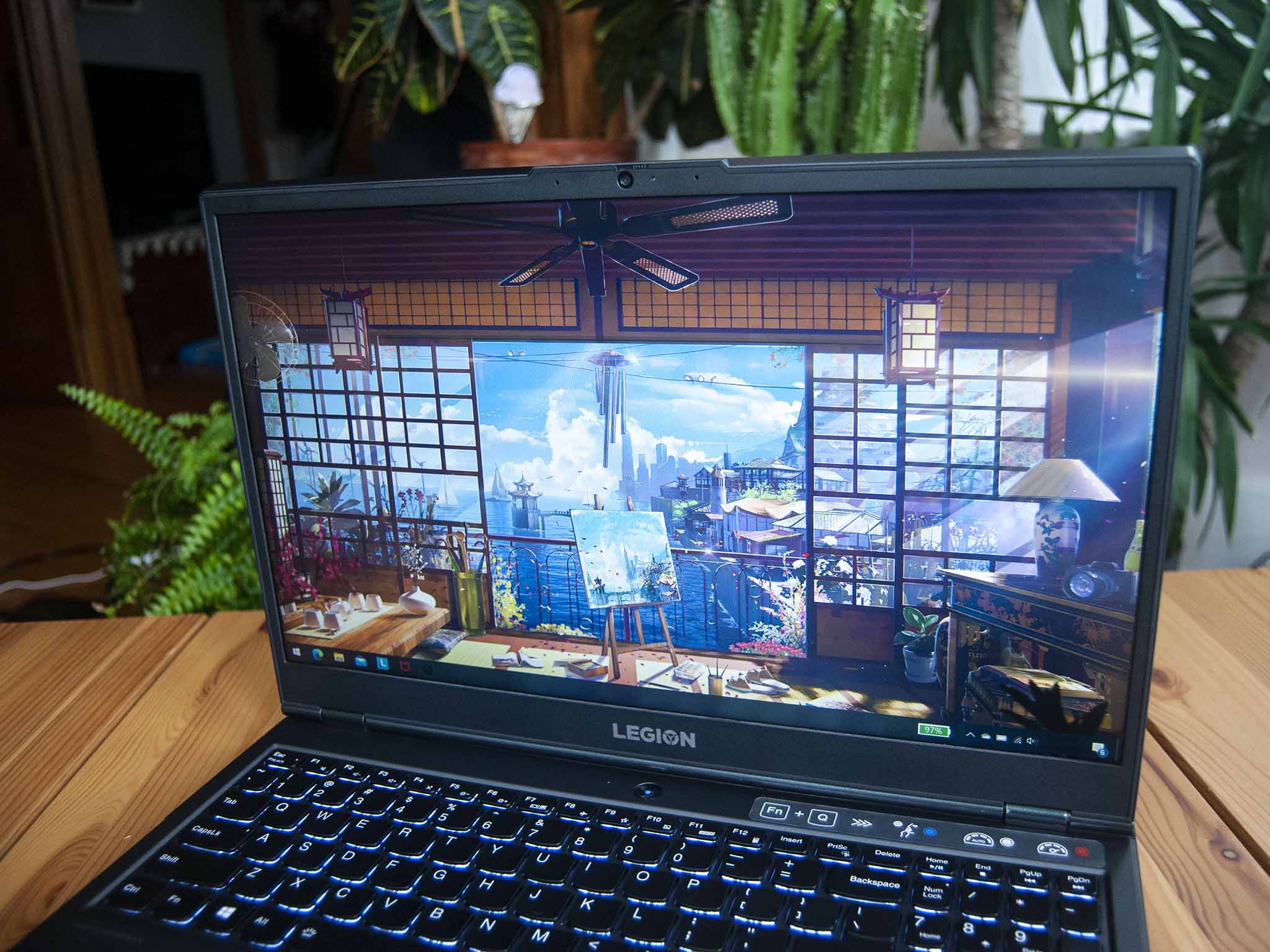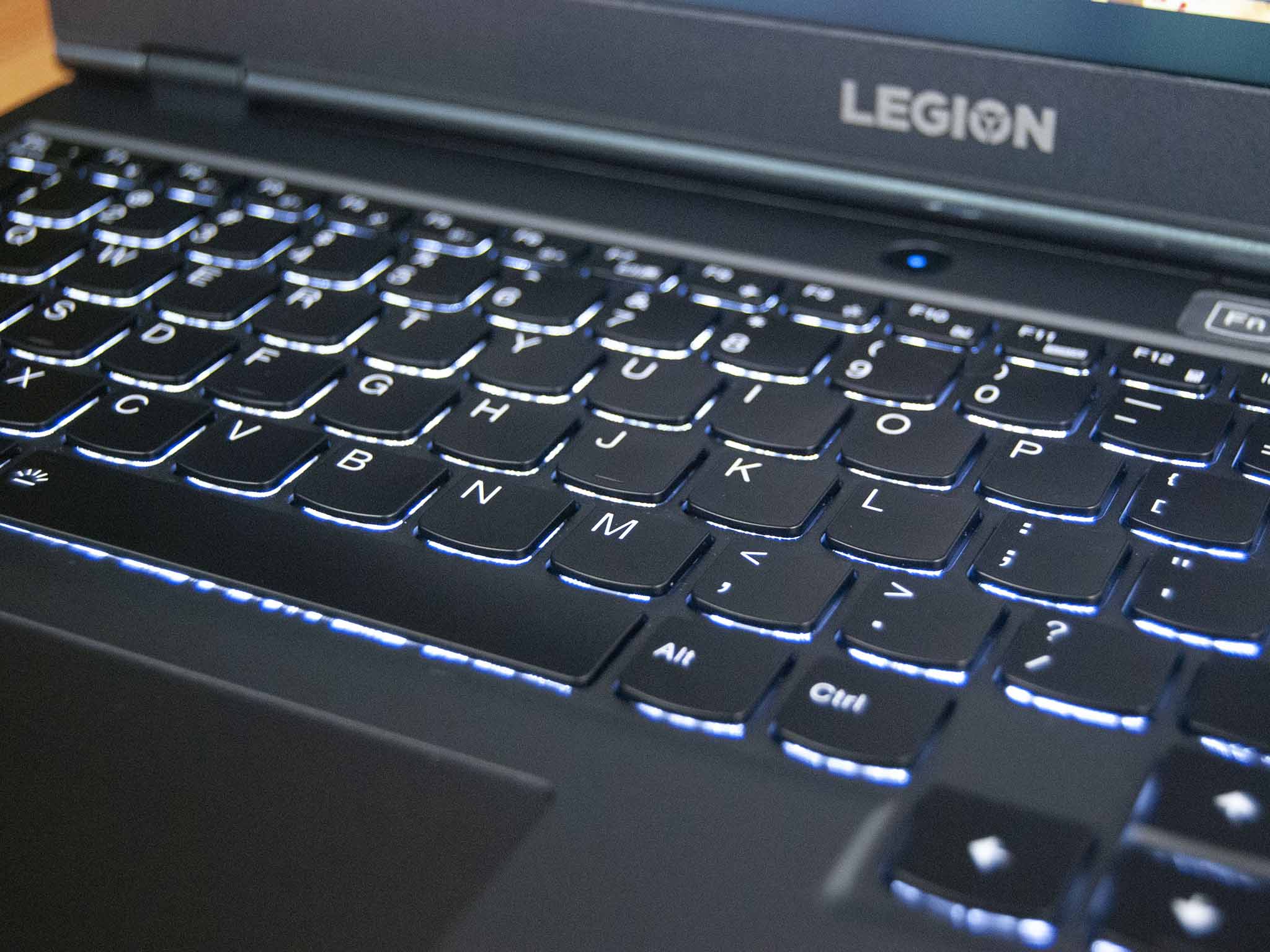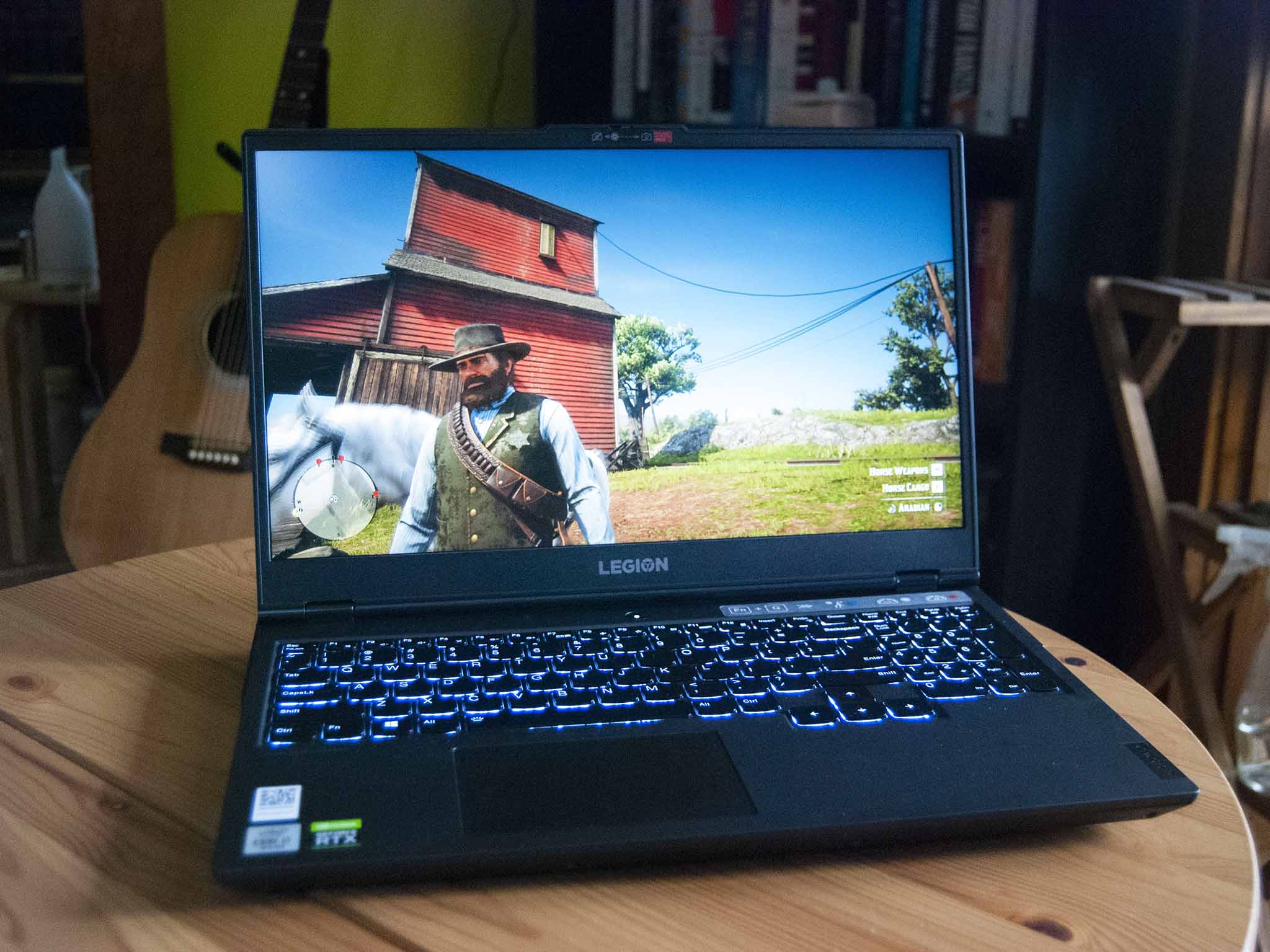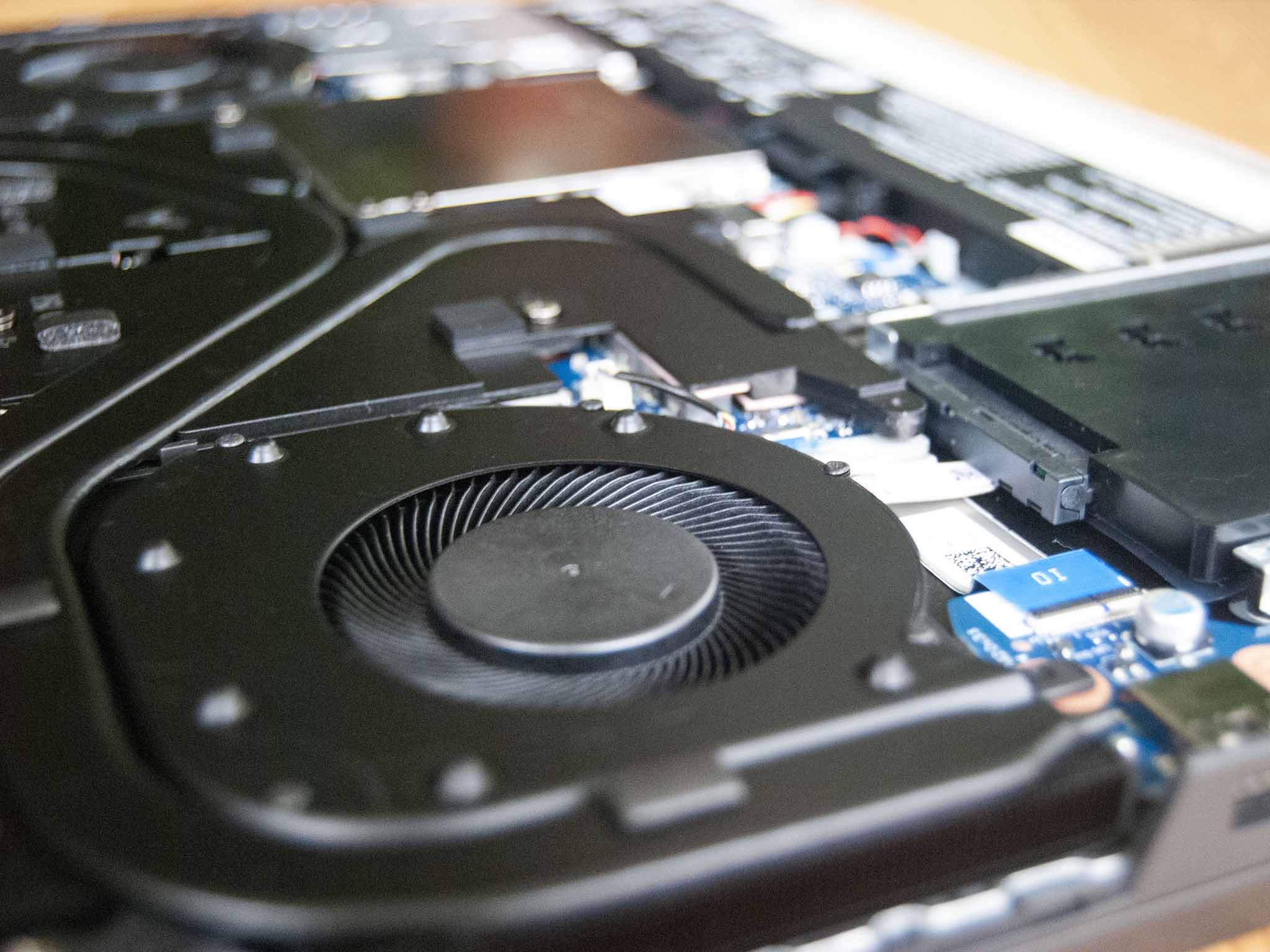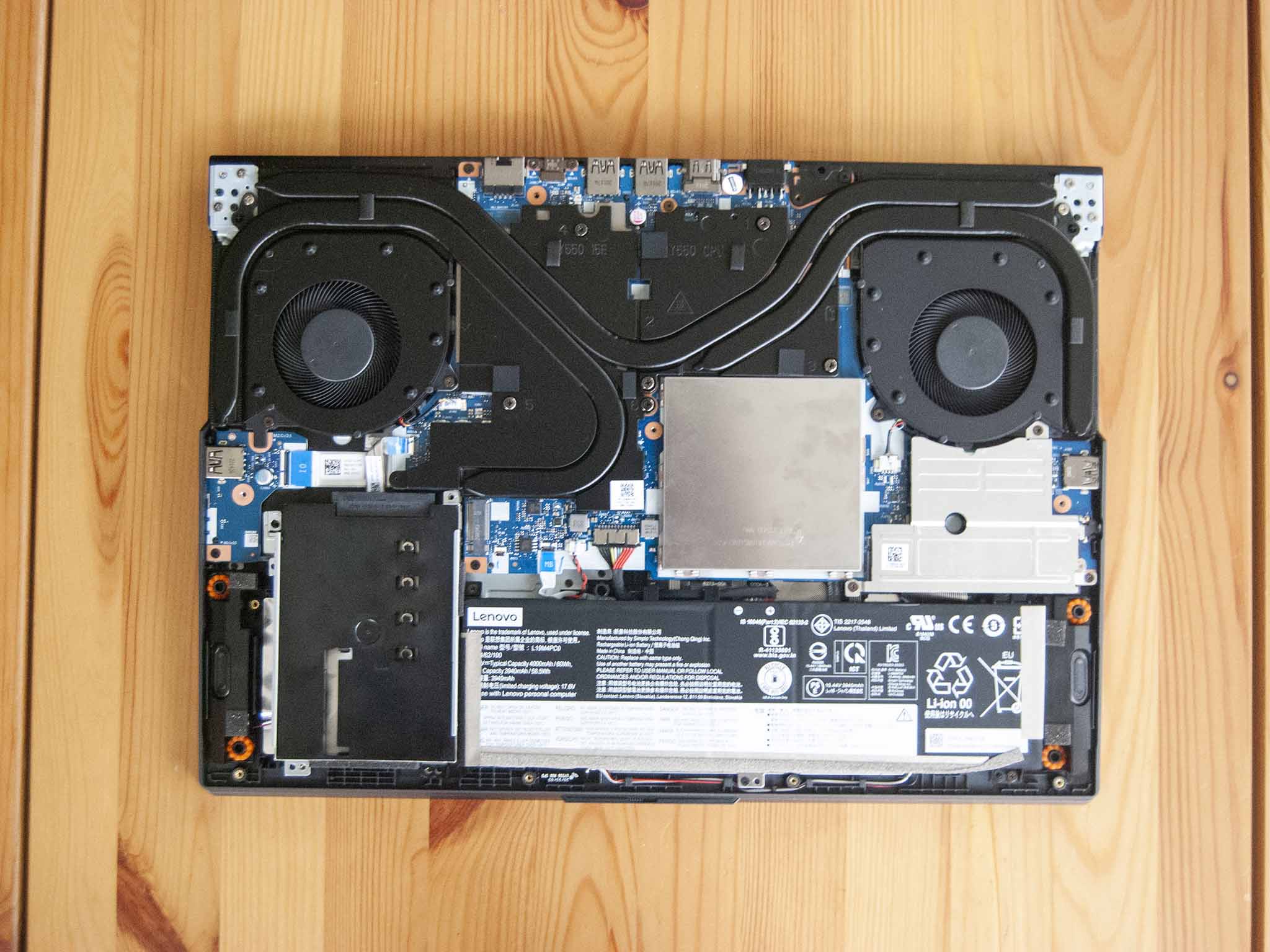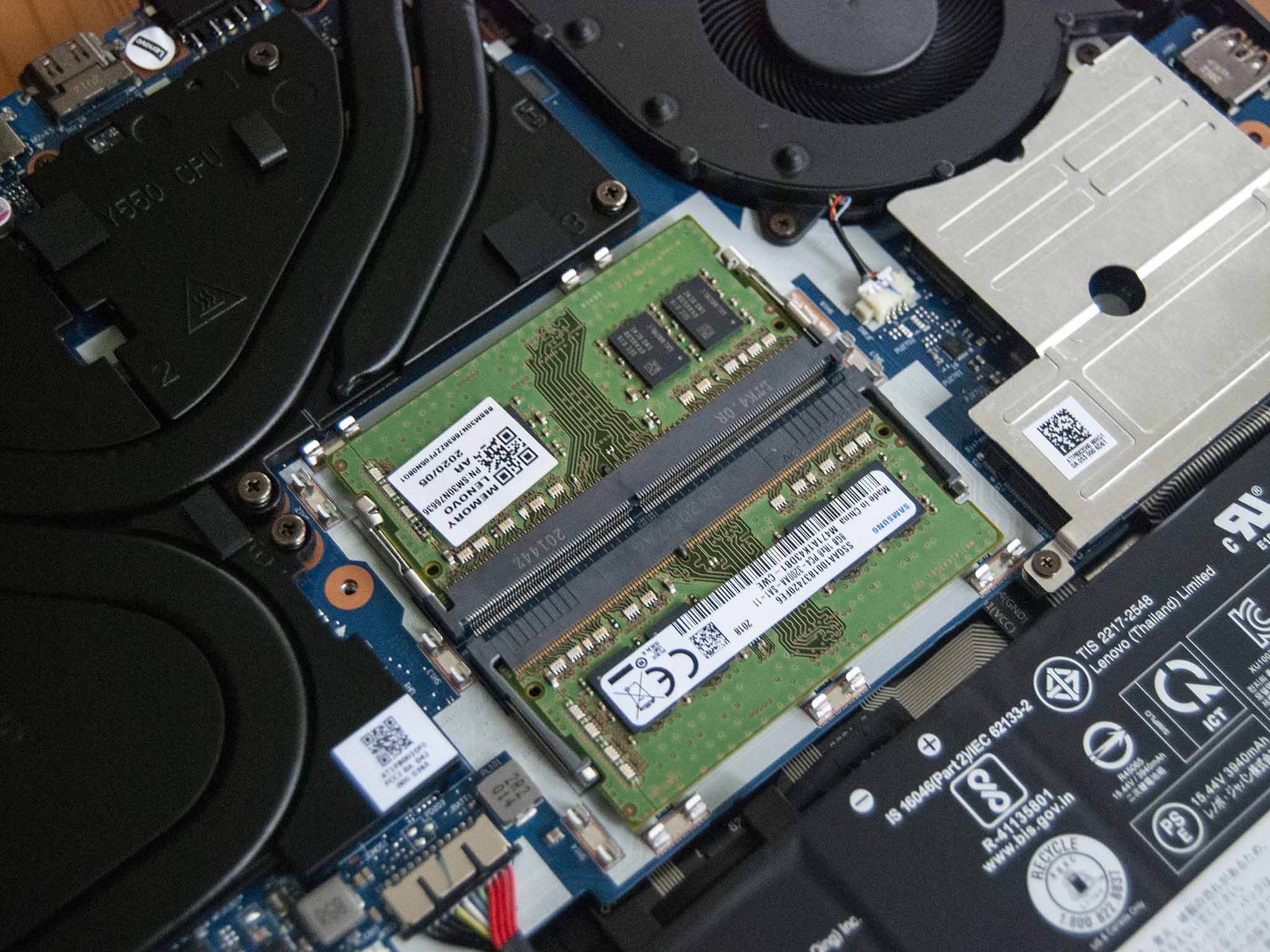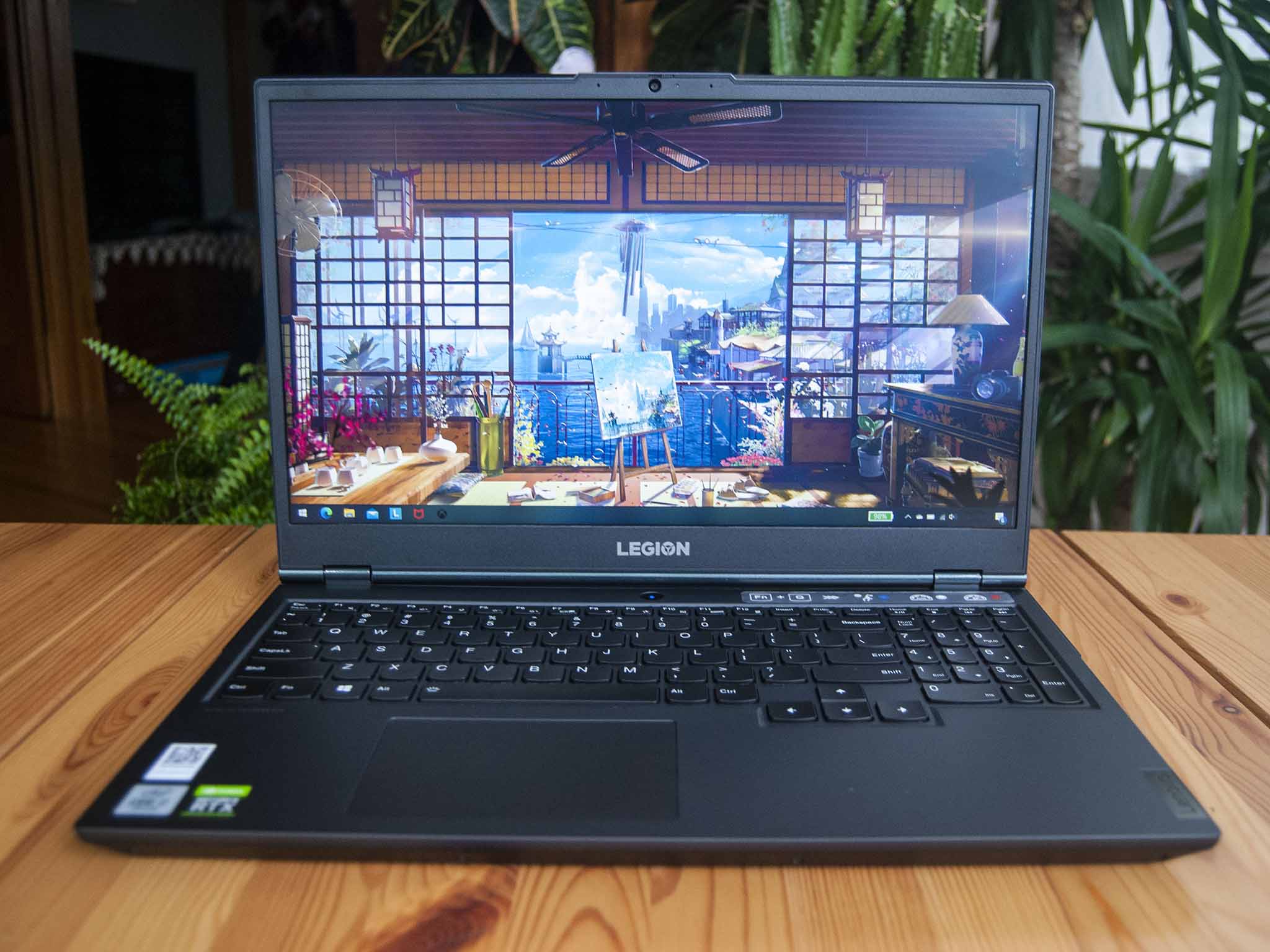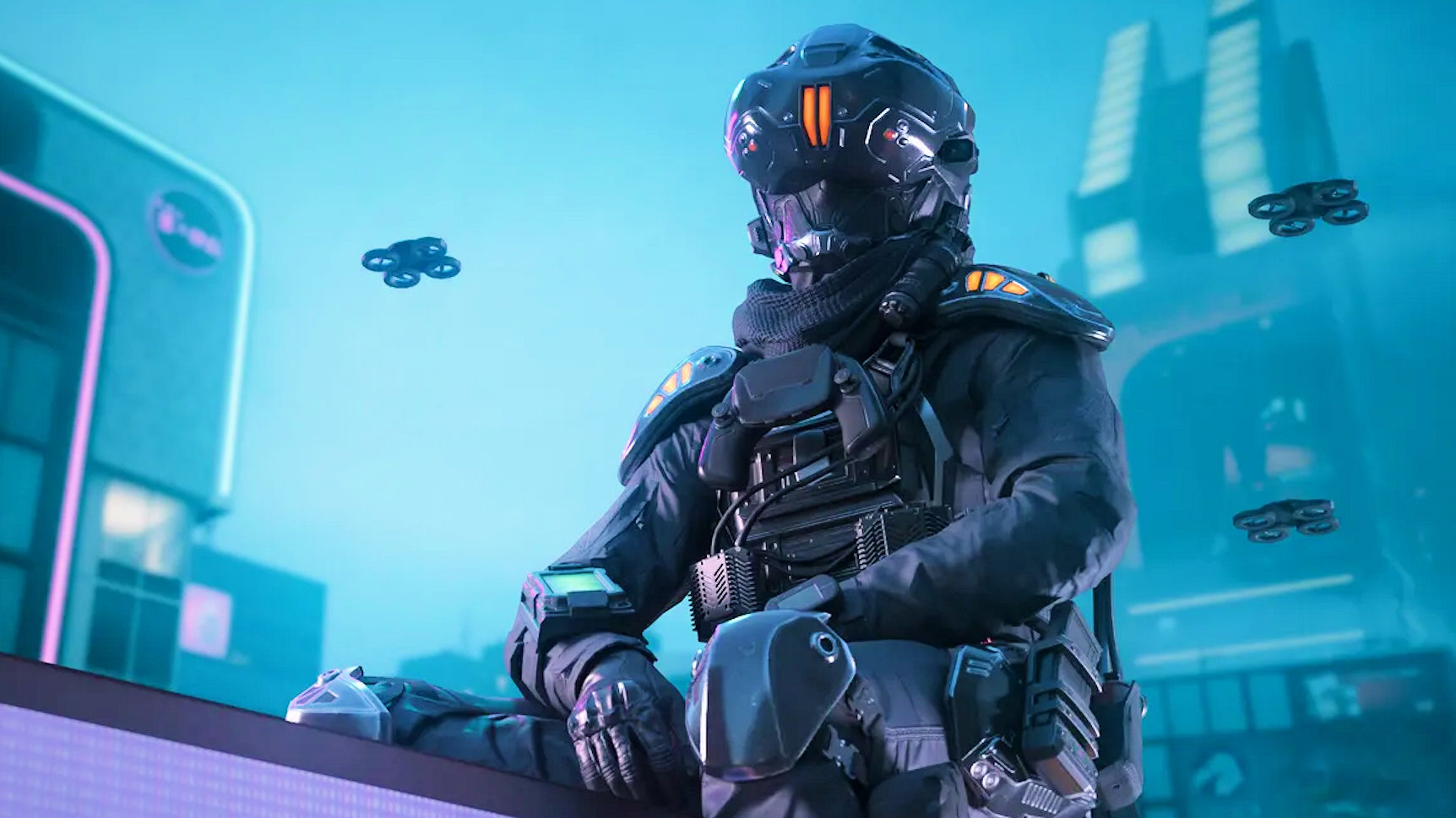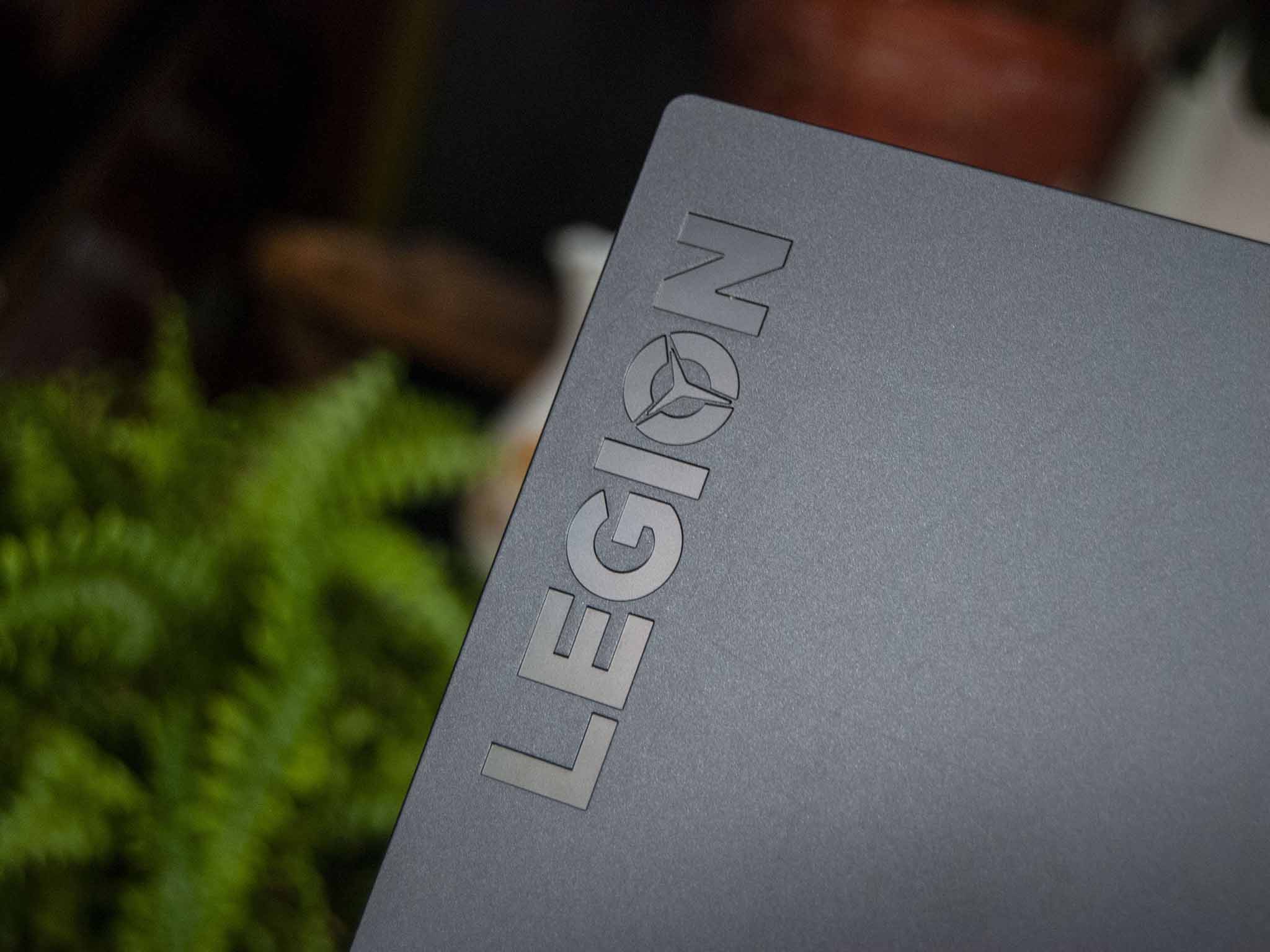
When Lenovo announced April 2020 it was rebranding its Legion gaming laptops, I was glad to see the design wasn't straying far from the 2019 Y540 and Y740 offerings. I loved the Y740 15 and gave it a Windows Central Recommended Award, impressed as I was with performance and thermals. I've now been using the Legion 5i 15 for a couple of weeks as my main gaming piece, and while it isn't as high-end as the 7i, it's still been a lot of fun. Here's what you need to know before making a final decision on the Legion 5i 15.
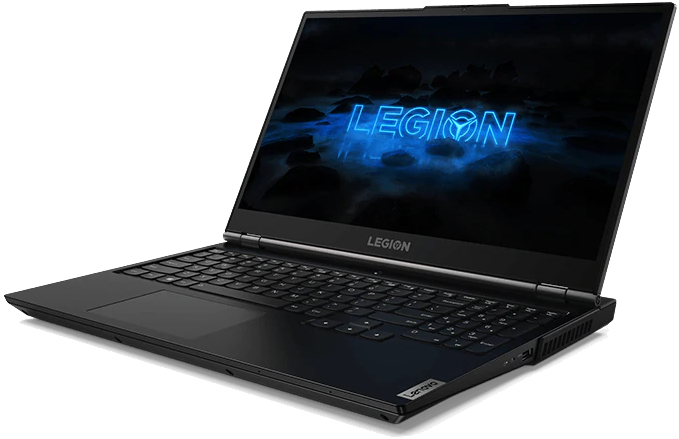
Bottom line: Battery life is poor, and there could be higher-end display options, but overall the Legion 5i 15's performance and thermals are impressive. You can push the laptop without seeing any throttling, and the overall design will appeal to those who don't necessarily want the "gamer" label.
Pros
- No thermal throttling under load
- Color-accurate display with 144Hz refresh
- Comfy keyboard with deep travel
- Lots of ports
- Webcam back above the display
Cons
- 60Wh battery is far too small (go with 80Wh)
- No QHD or UHD display options
- Display needs more brightness
- No NVIDIA G-Sync
Specifications and pricing
Lenovo Legion 5i 15 at a glance
Lenovo supplied Windows Central with a review unit of the Legion 5i 15 gaming laptop. This is a rebrand of Lenovo's gaming series, announced April 2020, available with AMD and Intel hardware. There is also currently a 17-inch version available only with Intel hardware, as well as a 17-inch AMD version expected September 2020.
Within the review, the unit is a 10th Gen Intel Core i7-10750H processor (CPU), 16GB of dual-channel DDR4 RAM, 1TB M.2 PCIe solid-state drive (SSD), and a NVIDIA RTX 2060 graphics card (GPU). To better suit your needs, you can outfit models with a Core i5-10300H CPU, 8GB of RAM, as low as a 128GB SSD, and a few different NVIDIA GPUs, including GTX 1650, GTX 1650 Ti, GTX 1660 Ti, and RTX 2060.
As for 15.6-inch IPS display options, the review unit has a 1920x1080 resolution, 144Hz refresh rate, 5ms response time, about 360 nits brightness, Dolby Vision, and anti-glare layer. Options with 60Hz and 120Hz refresh rates are likewise available.
This exact model costs about $1,450 at Lenovo before any of its common deep discounts. At the time of writing, it's priced below $1,300. You can also grab this exact model at B&H for about $1,349.
The following are the exact specifications found in the review unit sent by Lenovo.
All the latest news, reviews, and guides for Windows and Xbox diehards.
| Category | Spec |
|---|---|
| OS | Windows 10 Home |
| Processor | 10th Gen Intel Core i7-10750H Six cores Up to 5.0GHz |
| RAM | 16GB DDR4-2933MHz Dual channel |
| Graphics | NVIDIA RTX 2060 6GB GDDR6 VRAM |
| Storage | 1TB M.2 PCIe NVMe SSD |
| Display | 15.6 inches 1920x1080 (FHD) Anti-glare IPS 144Hz refresh rate Dolby Vision |
| Ports | Four USB-A 3.1 USB-C 3.1 (DP 1.2) HDMI 2.0 Ethernet 3.5mm audio |
| Audio | Dual 2W Harman speakers Down-firing |
| Wireless | Intel Wi-Fi 6 AX201 802.11ax (2 x 2) Bluetooth 5.0 |
| Camera | Front-facing 720p |
| Keyboard | Single-zone White backlight Anti-ghosting |
| Touchpad | Precision |
| Security | Kensington lock slot Webcam shutter |
| Battery | 60Wh 230W AC adapter |
| Dimensions | 14.3 x 10.22 x 0.93 - 1.03 inches (363.06mm x 259.61mm x 23.57 - 26.1mm) |
| Weight | From 5.42 pounds (2.46kg) |
| Color | Phantom black |
Not a lot has changed
Lenovo Legion 5i 15 design and features
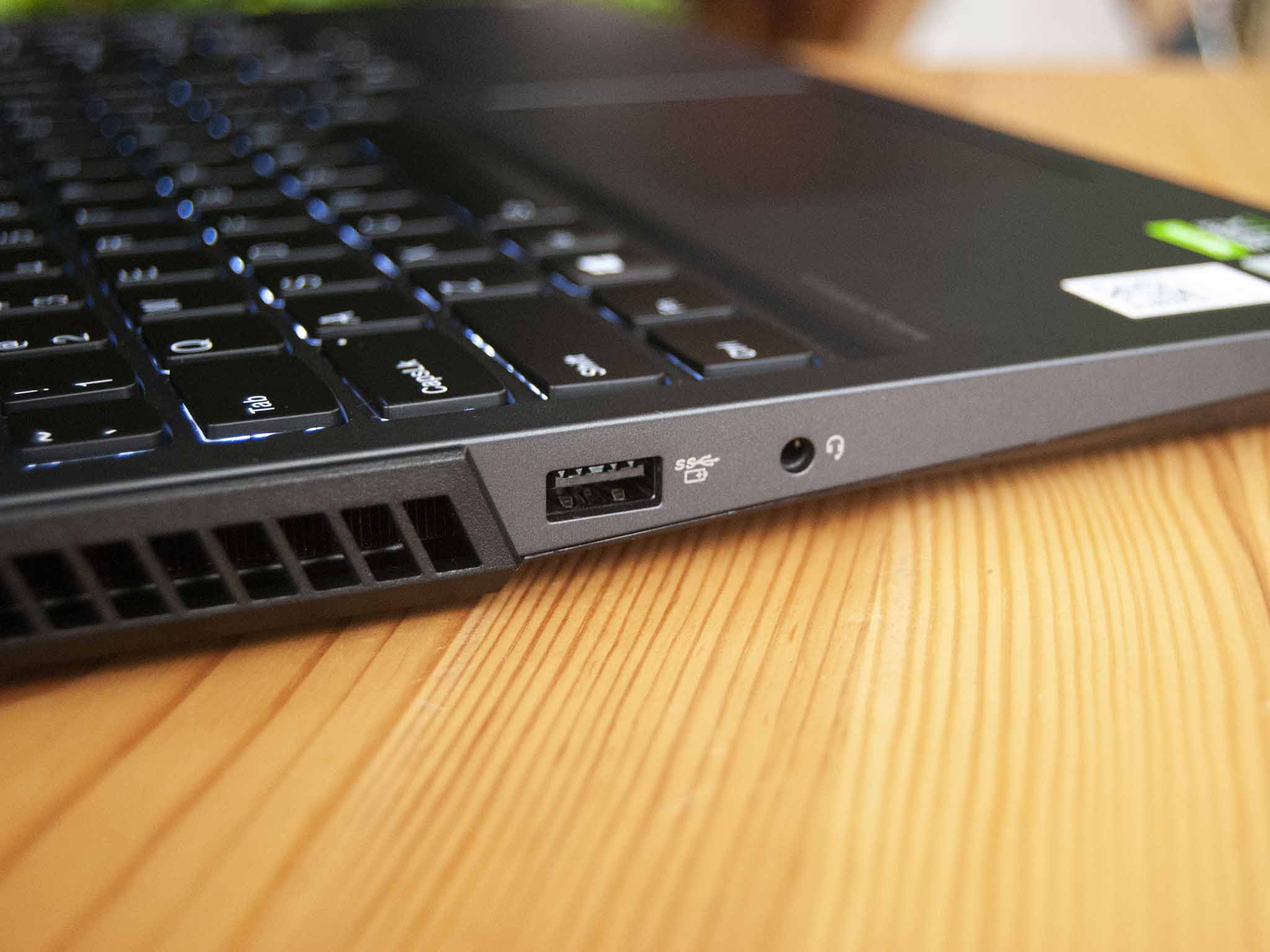
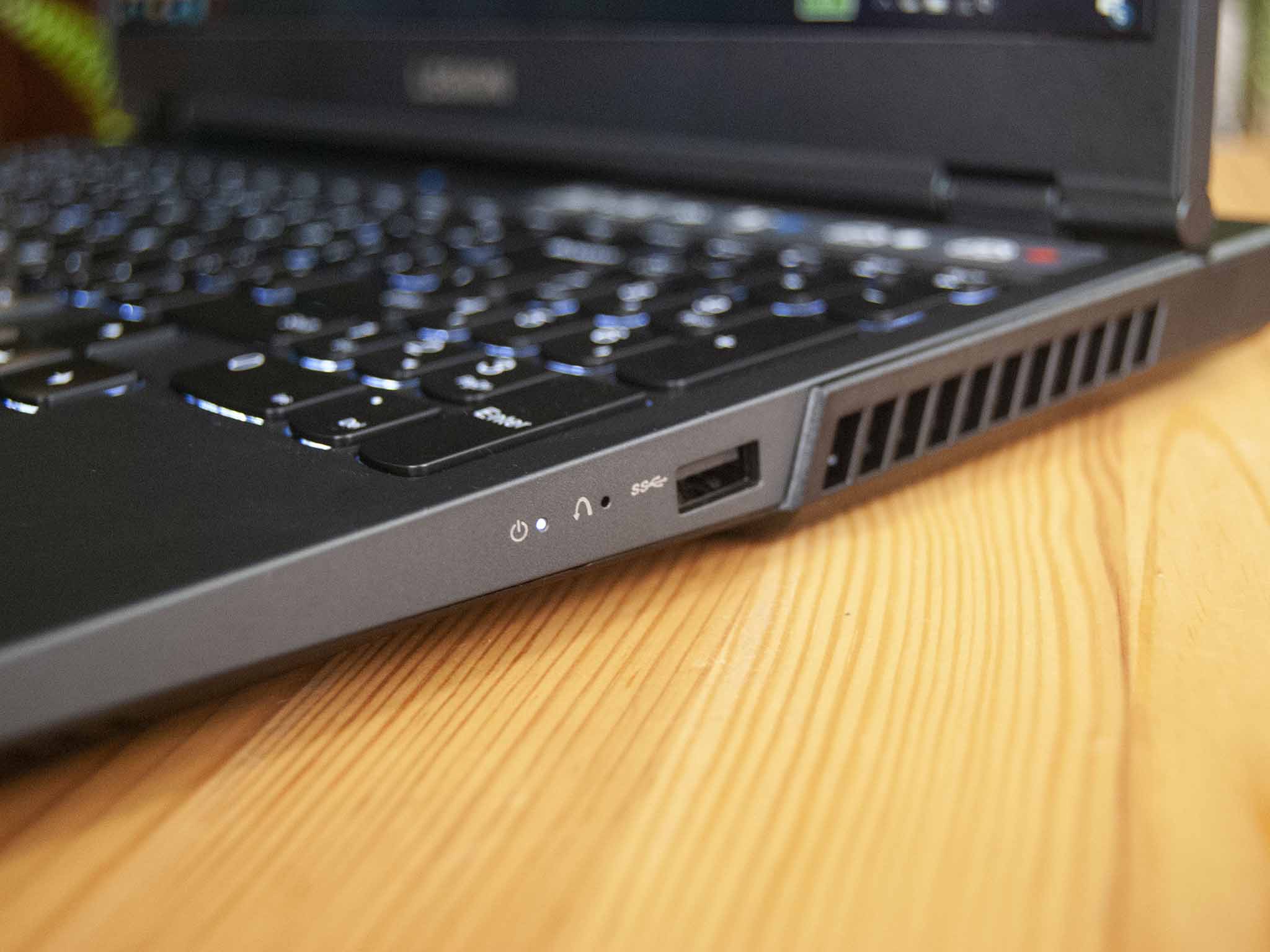
Not a lot has changed regarding design since the Legion Y540. The Legion 5i is almost exactly as thick, and it actually weighs almost a half-pound more. It's still a PC and ABS plastic chassis in Phantom black color and soft finish, and it's still quite rigid. There is some flex in the lid, but nothing that's alarming. On the outside of the lid is a full "Legion" logo as well as a Lenovo badge on the opposite corner. The main chassis has some plastic shrouding that covers vents and helps keep the laptop from lying completely flat and denying air intake.
The majority of ports reside along the back edge where a lip juts out, including HDMI, USB-C, two USB-A, and Ethernet. They are labeled along the top of the lip, though there's no backlight to connect cables in the dark. On either side of the laptop is a USB-A port, and there's a 3.5mm headset jack on the left side. It's a decent collection of ports that should allow you to connect most, if not all, of your favorite gaming accessories. The only thing missing here is Thunderbolt 3. Despite the rear lip that houses ports, Lenovo has designed the laptop so that the display can sit back a full 180 degrees to lie flat. One thing I noticed after just a few days of use is how susceptible the lid is to scratching. Regular use caused a couple of rather large runs, and flipping it over to remove the bottom cover scored it further. If you're buying this laptop, consider investing in a skin ASAP.
Down-firing speakers reside on the tapered sides of the laptop. Though most gamers are going to want to opt for something from our best PC gaming headset roundup, the dual 2W speakers tuned by Harman do a good job. There's some bass, the audio gets loud, and it doesn't distort. Whether I was listening to music or gaming, I found them to be adequate.
One thing that annoyed me about the Y500-series was its webcam placement. If you're a streamer, you're no doubt using some sort of third-party webcam for better quality video, but still, the angle with which the built-in camera shot up your nose wasn't pleasant. Luckily, Lenovo has moved the 720p camera back above the display, plus it has added a privacy shutter. If you're buying a gaming laptop but need to use it for work or school occasionally, this is a nice change (and addition). And if you're taking the laptop with you to a dorm or office, there's a Kensington lock slot for added security.
With 10th Gen Intel CPUs comes Wi-Fi 6 connectivity. It's a new standard that's able to handle much faster speeds, making it ideal for gamers. The Legion 5i does have an Ethernet port for a wired connection, but with a proper Wi-Fi 6 router and high-speed ISP plan, you might find that there's no need to lay cables to your laptop. Bluetooth 5.0 is likewise ready to handle any wireless accessories.
FHD or … FHD
Lenovo Legion 5i 15 display
The Legion 5i is the lower-end option from Lenovo, and most of its available hardware — especially the GPUs — is best suited for 1080p (FHD). However, in the case of the NVIDIA RTX 2060, that's in my review unit, an argument could be made for a 1440p (QHD) option. As it stands, there are a few FHD displays (all IPS panels) to choose from at checkout; I was lucky enough to receive the comparatively high-end option with 144Hz refresh rate and 5ms response time.
Testing color accuracy, I got back 100% sRGB, 78% AdobeRGB, and 81% DCI-P3, all reliable results. Contrast is great and makes games pop, and the backlighting seems to be mostly uniform. An anti-glare finish cuts down well on glare, but there's still an issue with brightness. The display hits a maximum 364 nits, which for some people might be an issue. Some games are dark no matter how much you crank up the in-game brightness, and if you're enjoying a title on the go in a well-lit space, there could be problems. The screen goes as low as 2.1 nits for those who enjoy gaming in the dark without searing any retinas.
Despite using a NVIDIA GPU, there's no sign that this is a G-Sync display. That's a definite letdown, and it seems you'll have to opt for the higher-end Legion 7 if you want the additional variable refresh technology. NVIDIA Optimus is on duty in the Legion 5i, expertly switching between the integrated Intel GPU and the dedicated NVIDIA GPU as needed. This, in theory, should help extend battery life, and it can be completely disabled if you find it's causing issues. However, I didn't notice any hiccups with the system with it enabled.
Lots of travel
Lenovo Legion 5i 15 keyboard and touchpad
Lenovo did a great job with the Legion 5i's keyboard. It's the TrueStrike brand, with anti-ghosting and 1.5mm of key travel with a soft bottom. Though it's not a mechanical keyboard, presses are responsive, and there's a definite actuation point.
A number pad is included with the keyboard, which pushes the standard keys and touchpad off-center. The touchpad will be under your palm while using the WASD keys, but Lenovo included a touchpad killswitch with the Fn+F10 shortcut. Gone are physical touchpad buttons. It's large enough for productivity work and casual games, and no doubt, most people will connect a true gaming mouse once the real action begins.
The keyboard in this review unit has a standard white backlight that offsets nicely against the black finish. For a bit more money, you can get four-zone customizable RGB lighting that will spice things up and make the Legion 5i look a lot more like a gaming laptop.
No throttling in sight
Lenovo Legion 5i 15 gaming and VR
New to the Legion 5i is a "Q Control" function using the Fn+Q shortcut. This toggles the laptop between three different power settings, represented by an LED in the middle of the power button. The white LED denotes a "Balance" plan, the red LED denotes a "Performance" plan, and the blue LED denotes a "Quiet" plan. These aren't just for show or for fan speed. I used AIDA64 for some stress tests to see how the Legion 5i operates.
Using the Balance plan, the CPU runs at about 30W when not under load, evening out at about 60W when under 100% load. This is without stressing the GPU at the same time. The hottest temperature the CPU hit was 76 degrees Celsius after a sustained test. There was absolutely no thermal throttling. Keep in mind I also ran all these tests while charging the battery, which creates extra heat.
The CPU and GPU in the Legion 5i 15 can run at full tilt without thermal issues thanks to smart power balancing on Lenovo's part.
Stress-testing the CPU and GPU together with the same Balance plan, the CPU sits at about 45W under load. This is thanks to Lenovo's Dual Burn support that I also saw in the Legion Y740 15, which allows both pieces of hardware to run at their full potential without thermal throttling. The fans are louder with both the CPU and GPU under load, but still no thermal throttling. CPU core temperatures sit at around the same 75 degrees, with the GPU around 70 degrees.
Switching to the Performance plan and running the same stress test with CPU and GPU, the CPU sits at about 50W under load. CPU clocks are about 500MHz faster (around 4.5GHz) than under the Balance plan, though temperatures are in the same 75-degree range. No sign of thermal throttling here either, though the fans are certainly louder. If you don't have a headset, the noise is going to begin interfering with game audio unless you have it cranked.
Finally, with Quiet mode enabled for CPU and GPU combination stress testing, the CPU sits at about 25W, and clock speeds drop down to about 1.5GHz. CPU and GPU temperatures drop down to about 65 degrees, and fans are noticeably quieter. Performance is going to suffer in the Quiet mode, but it's still going to handle most non-AAA blockbusters with ease. At least with the RTX 2060.
I must stress that there was no reported thermal throttling at all during these lengthy stress tests. I switched between power settings on the fly and watched wattages, clock speeds, temperatures, and fan speeds move around as needed, but it all seemed to work flawlessly.
I ran the following synthetic benchmarks with the preset Balance mode to see how the Legion 5i measures against other laptops we've reviewed. VRMark Orange Room kept throwing a Java error, no matter what I couldn't get it to run properly. Rest assured, though, that this laptop with an RTX 2060 GPU can handle a quality VR experience.
3DMark
Time Spy
| Device | GPU | Score |
|---|---|---|
| Lenovo Legion 5i 15 | RTX 2060 | 5,835 |
| ASUS ROG ZEPHYRUS G14 | RTX 2060 Max-Q | 6,224 |
| HP ENVY 32 AIO | RTX 2060 Max-Q | 5,664 |
| Lenovo ThinkPad X1 Extreme (Gen 2) | GTX 1650 Max-Q | 3,190 |
| Razer Blade 15 | RTX 2070 Max-Q | 6,325 |
| Lenovo ThinkPad P53 | Quadro RTX 5000 | 6,760 |
| Lenovo Legion Y740 15 | RTX 2070 Max-Q | 6,406 |
| Lenovo Legion Y740 17 | RTX 2080 Max-Q | 7,128 |
Despite having a full RTX 2060, the Legion 5i's Core i7 CPU doesn't measure up to the Ryzen 9 CPU in the Zephyrus G14. No doubt a loss of points for that reason, as CPU does affect the Time Spy score.
3DMark
Fire Strike
| Device | GPU | Score |
|---|---|---|
| Lenovo Legion 5i 15 | RTX 2060 | 14,371 |
| ASUS ROG ZEPHYRUS G14 | RTX 2060 Max-Q | 14,709 |
| HP ENVY 32 AIO | RTX 2060 Max-Q | 13,163 |
| Lenovo ThinkPad X1 Extreme (Gen 2) | GTX 1650 Max-Q | 7,198 |
| Razer Blade 15 | RTX 2070 Max-Q | 14,944 |
| Dell XPS 15 (7590) | GTX 1650 Max-Q | 7,763 |
| Lenovo ThinkPad P53 | Quadro RTX 5000 | 16,367 |
| Lenovo Legion Y740 15 | RTX 2070 Max-Q | 14,669 |
| Lenovo Legion Y740 17 | RTX 2080 Max-Q | 16,303 |
Cinebench
Cinebench (R20) (Higher is better)
| Device | CPU | Range |
|---|---|---|
| Lenovo Legion 5i 15 | Core i7-10750H | 2,736 to 2,826 |
| ASUS ROG ZEPHYRUS G14 | Ryzen 4900HS | 4,197 to 4,390 |
| Dell XPS 15 (7590) | Core i9-9980HK | 3,174 to 3,283 |
| HP ENVY 32 AIO | Core i7-9700 | 2,906 to 3,073 |
| Lenovo ThinkPad X1 Extreme (Gen 2) | Core i7-9850H | 1,730 to 2,495 |
| Dynabook Portégé X30-F | Core i7-8665U | 1,242 to 1,313 |
| Lenovo ThinkPad P53 | Xeon E-2276M | 2,686 to 2,701 |
| Surface Laptop 3 13.5 | Core i5-1035G4 | 1,584 to 1,606 |
| Surface Laptop 3 15 | Core i7-1065G7 | 1,703 to 1,745 |
Running Cinebench multiple times in a row can show whether or not a laptop's CPU is going to suffer from thermal throttling. No issues here.
To test some in-game frame rates, I played some games and recorded a frames-per-second (FPS) average with the laptop set on the Balance preset. Starting with Red Dead Redemption 2 on a mix of mostly High and some Medium settings, the Legion 5i 15 averaged 56 FPS over the course of about 10 minutes. This is a heavy game that takes a lot of PC to get above 60 FPS, so no surprises here. The game looks fantastic on this laptop.
The Legion 5i 15 can run high-impact games like Red Dead Redemption 2 smoothly, and it will absolutely crush esports titles.
Next, I switched to popular battle royale Call of Duty: Warzone. I played a round through to death and averaged 101 FPS with High and Normal settings. This is a high-impact game and puts the CPU and GPU to the test. I didn't bother enabling ray tracing here since the RTX 2060 can barely handle it. If you're looking for a laptop that can do ray tracing right, you'll want something packed with one of NVIDIA's best graphics cards, like an RTX 2070 Super or better.
For something less impactful and to see how the Legion 5i 15 might perform in an esports setting, I played a few casual rounds of Counter-Strike: Global Offensive with most graphics settings maxed out. I got back a 172 FPS average here, which is expected. If you're looking for a laptop that can handle competitive gaming with titles like CS:GO, League of Legends, or Fortnite, you should be in good hands.
Finally, I played some Neon Abyss, a low-impact indie title available with the Xbox Game Pass for PC. It averaged 402 FPS during a playthrough. It's clear the Legion 5i will have no trouble handling indie gems like this.
The battery will get ya
Lenovo Legion 5i 15 performance and battery
Battery life in a gaming laptop is almost never great, and the Legion 5i is no exception. It's available with a 60Wh and 80Wh option, and after using the former, I strongly urge anyone buying a model to go with the larger battery. The 60Wh battery in this review unit managed just 46 minutes in PCMark 10's Gaming rundown test with screen brightness at 50% and power plan on Balance.
Testing again with PCMark 10's Modern Office rundown at the same 50% brightness and Balance power plan, the Legion 5i managed just an hour and 27 minutes. I was able to eke closer to 1.5 hours out of the laptop while playing a low impact game like Neon Abyss late at night with the brightness turned down, but for the most part, expect less than an hour before needing a charge.
The 230W AC adapter does at least manage to recharge the 60Wh battery to 80% in just less than 30 minutes, which is really not bad. It's just that you're going to need the charge again in about the same amount of time, so you might as well just leave it plugged in.
I ran some further synthetic benchmarks to see where the Legion 5i sits among more traditional laptops.
Geekbench 5
Geekbench 5.0 (CPU) (Higher is better)
| Device | CPU | Single core | Multi core |
|---|---|---|---|
| Lenovo Legion 5i 15 | i7-10750H | 1,226 | 5,993 |
| ASUS ROG Zephyrus G14 | Ryzen 9 4900HS | 1,221 | 7,982 |
| Acer Spin 3 (SP314-54N) | i5-1035G1 | 1,185 | 3,524 |
| HP ENVY x360 | Ryzen 5 4500U | 1,100 | 4,564 |
| Acer Swift 3 | Ryzen 7 4700U | 1,131 | 4,860 |
| Lenovo IdeaPad Flex 5 14 | Ryzen 5 4500U | 1,087 | 4,570 |
| Surface Laptop 3 15 | Ryzen 5 3580U | 769 | 2,720 |
| Lenovo ThinkPad L13 Yoga | i5-10210U | 1,069 | 3,754 |
| Lenovo Yoga C640 | i3-10110U | 1,015 | 2,111 |
| Lenovo Yoga C740 14 | i5-10210U | 1,094 | 3,767 |
| Samsung Galaxy Book Flex | i7-1065G7 | 1,317 | 4,780 |
| Dell XPS 13 (9300) | i7-1065G7 | 1,284 | 4,848 |
| Surface Laptop 3 15 | i7-1065G7 | 1,336 | 4,893 |
| HP Elite Dragonfly | i7-8665U | 1,125 | 2,942 |
| Surface Laptop 3 13.5 | i5-1035G7 | 1,177 | 4,413 |
| HP Spectre x360 13 | i7-1065G7 | 1,006 | 3,402 |
| Surface Pro X | SQ1 | 725 | 2,819 |
| Galaxy Book S | SD 8cx | 685 | 2,681 |
PCMark
PCMark 10
| Device | Score |
|---|---|
| Lenovo Legion 5i 15 | 5,118 |
| ASUS ROG Zephyrus G14 | 5,707 |
| Acer Spin 3 (SP314-54N) | 3,674 |
| HP ENVY x360 | 4,755 |
| Acer Swift 3 | 4,861 |
| Lenovo IdeaPad Flex 5 14 | 4,759 |
| Surface Laptop 3 15 (AMD) | 4,006 |
| Lenovo IdeaPad Flex 14 | 3,202 |
| Surface Book 3 15 | 4,393 |
| Lenovo ThinkPad L13 Yoga | 4,899 |
| Lenovo Yoga C640 | 4,008 |
| Lenovo Yoga C740 | 4,941 |
| Samsung Galaxy Book Flex | 3,924 |
| Dell XPS 13 (9300) | 4,524 |
| Surface Laptop 3 15 (Intel) | 4,604 |
| Dell XPS 13 2-in-1 | 4,554 |
| HP Spectre x360 13 | 4,261 |
| HP Elite Dragonfly | 3,716 |
| LG gram 17 | 4,157 |
| Surface Pro 7 (i5) | 3,992 |
SSD
CrystalDiskMark (Higher is better)
| Device | Read | Write |
|---|---|---|
| Lenovo Legion 5i 15 | 3,308 MB/s | 2,960 MB/s |
| ASUS ROG Zephyrus G14 | 1,907 MB/s | 1,751 MB/s |
| Acer Spin 3 (SP314-54N) | 1,630 MB/s | 885 MB/s |
| HP ENVY x360 | 1,530 MB/s | 864 MB/s |
| Acer Swift 3 | 2,161.99 MB/s | 1,214.84 MB/s |
| Lenovo IdeaPad Flex 5 14 | 2,199.10 MB/s | 1,017.07 MB/s |
| Lenovo IdeaPad Flex 14 | 3,405 MB/s | 1,512 MB/s |
| Lenovo ThinkPad L13 Yoga | 3,188.82 MB/s | 1,685.61 MB/s |
| Lenovo Yoga C640 | 1,906.78 MB/s | 970.69 MB/s |
| Samsung Galaxy Book Flex | 3,376 MB/s | 2,983 MB/s |
| Dell XPS 13 (9300) | 3,000 MB/s | 1,217 MB/s |
| HP Spectre x360 (Optane) | 2,092 MB/s | 515 MB/s |
| Dell XPS 13 2-in-1 | 2,400 MB/s | 1,228 MB/s |
| HP Elite Dragonfly (Optane) | 2,124 MB/s | 548 MB/s |
| Lenovo Yoga C740 | 3,408 MB/s | 2,982 MB/s |
| LG gram 17 (2020) | 3,477 MB/s | 2,900 MB/s |
| Surface Laptop 3 15 | 2,028 MB/s | 806 MB/s |
| Surface Laptop 3 13.5 | 2,338 MB/s | 1,583 MB/s |
| Acer Swift 5 (SF514-54T) | 1,641 MB/s | 1,025 MB/s |
| Lenovo ThinkPad X1 Extreme (Gen 2) | 3,416 MB/s | 3,016 MB/s |
The Western Digital NVMe SSD posts up blistering speeds here. No complaints. Alongside the M.2 slot connected to the stock SSD, there's a secondary M.2 slot on the other side of the laptop. It's packed in with the area for a 2.5-inch SATA SSD, so if you're upgrading, you'll have to choose between a two M.2 SSDs or one M.2 SSD and one 2.5-inch SATA SSD.
Lots of great options right now
Lenovo Legion 5i 15 compared to the competition
The Legion 5i 15 is a decent mid-range package available at a good price, and anyone loyal to Lenovo's laptops should feel comfortable shopping within the lineup. The AMD version of the Legion 5 15 would be a more affordable contender, except its GPU options are either a NVIDIA GTX 1650 or a GTX 1650 Ti. That's it.
One gaming laptop everyone has their eye on right now is the ASUS ROG Zephyrus G14, which makes the cut for our roundup of the best gaming laptops. Its eight-core Ryzen 9 4900HS is an absolute beast, and it's paired with a NVIDIA RTX 2060 Max-Q GPU. The design definitely isn't as subdued as the Legion 5i, but it can be had for about $1,599. That's a couple hundred more than the Legion 5i review unit, but it's an absolute beast.
Another competitor from ASUS is the TUF Gaming A15. It has a more subdued design compared to the ROG Zephyrus G14, and it's packing a Ryzen 7 4800H CPU, NVIDIA RTX 2060 GPU, 16GB of RAM, 1TB M.2 PCIe SSD, 144Hz display, and an enormous 90Wh battery. All that for about $1,400, making it no doubt the closest alternative to the Legion 5i I tested here.
Dell's G5 15 is a good way to go with an Intel and NVIDIA combination or a full AMD config. A model equipped with an Intel Core i7-10750H CPU, 16GB of RAM, NVIDIA RTX 2060 GPU, 512GB M.2 PCIe SSD, 144Hz display, and 68Wh battery costs about $1,176. That makes it a good option if you like the level of performance in the Legion 5i but don't want to spend quite as much.
If you want to go full AMD, a Dell G5 15 with Ryzen 7 4800H, Radeon RX 5600M GPU (about the same performance as the RTX 2060), 16GB of RAM, 1TB M.2 PCIe SSD, 144Hz display, and 68Wh battery costs about $1,245.
Should you buy Lenovo's Legion 5i 15?
Who it's for
- Those who want mid-range gaming and VR performance
- Those who want to crush esports titles
- Those who want an FHD display with high refresh rate
- Those who don't want to spend premium prices
Who it isn't for
- Those who want high-quality ray tracing
- Those who want long battery life
- Those who want a QHD or UHD display
The Legion 5i is a strong continuation of what Lenovo started with the Y500 series. The no-nonsense chassis, the rear port hub, and the comfortable keyboard are all great design choices.
Being a mid-range offering, it's understandable that there aren't high-end display options, but I'd still like to see a QHD screen to pair up with the RTX 2060 GPU. It's capable of pushing decent framerates at 1440p, and it will sure do a great job at 1080p. It'd also be nice to see the display get brighter.
What really matters is performance, and in that aspect — save for battery life — the Legion 5i 15 is impressive. The new Q Control allows you to quickly select a power setting without leaving a game, and each setting actually does something. Even with the laptop allowed to maximize performance, there's no thermal throttling. Fans do get relatively loud, but the tradeoff is no dip in performance.
Gaming laptops, especially those with Ryzen CPUs, are getting really good, making it tough to choose when shopping. If you're in search of mid-range performance and don't mind sticking with Intel to land the higher-performance GPUs, the Legion 5i 15 should make your shortlist.

Cale Hunt brings to Windows Central more than nine years of experience writing about laptops, PCs, accessories, games, and beyond. If it runs Windows or in some way complements the hardware, there’s a good chance he knows about it, has written about it, or is already busy testing it.
